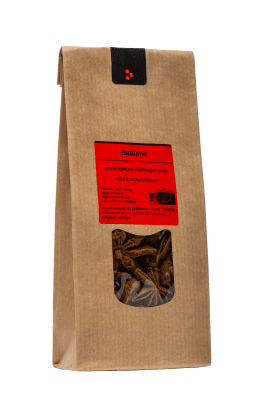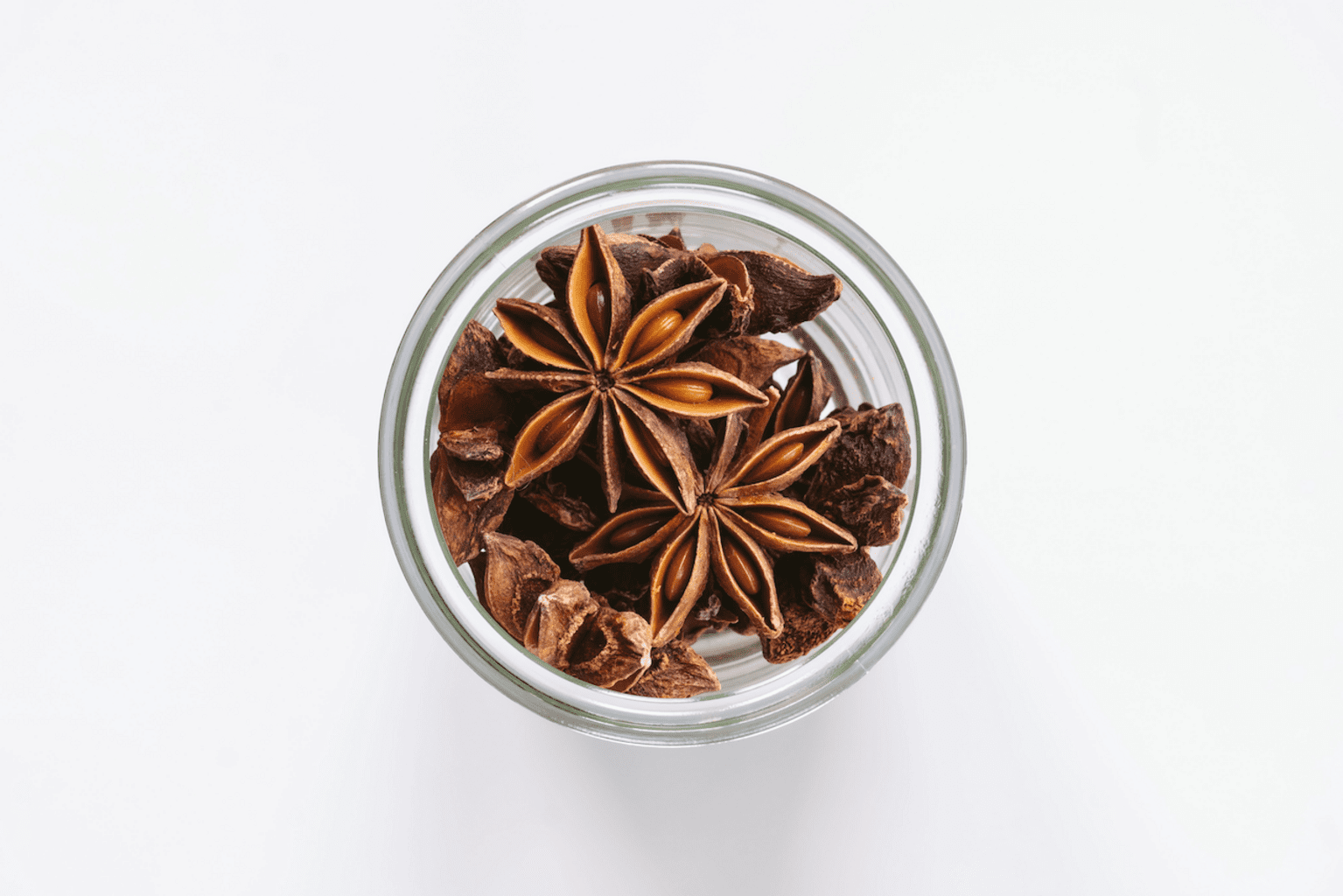Star Anise

Recommendations
-
Allergens
Absent, except for cross-contamination.
May contain traces of sesame, celery, mustard, soy. - Origin Vietnam
- Storage / Use In a cool, dark, dry place.
Olivier Rœllinger's words
Story
Star anise is the fruit of Illicium verum tree, a beautiful species that is a member of the magnolia family. The sturdy evergreen, native to the Yunnan province in China, can grow up to 8 meters tall and live up to 100 years. The star anise fruit resembles an 8-pointed starfish. It is gathered just before it ripens, then dried in the sun where it turns yellow, then blue, and finally a deep chestnut brown. Its smells strongly of anise, hence the name. Star anise is also called Chinese anise or Chinese fennel.
In 1588, the English explorer Thomas Cavendish brought the first star anise back to London from the Philippines after his extraordinary round-the-world voyage. Queen Elizabeth I’s apothecary, Morgan, was a particular fan of the spice and sent it to all of his European colleagues. The floral spice with its unique shape and seductive fragrance became hugely popular for flavoring preserves and liqueurs. Bordeaux adopted the spice for its specialty liqueur, anisette. Even today, anisette distillers use the spice in their base recipes.
Star anise is an essential spice in Chinese cuisine. It is one of the spices in Chinese five-spice powder along with Szechuan peppercorns, cinnamon, fennel, and cloves. Star anise’s recent surge in popularity can be traced to the use of different five-spice powder blends to season baked fish and meats. Star anise also makes its way into cookies/biscuits, hot toddies or grogs, and mulled wine. In Europe, star anise has also been used a marvelous addition to bouillons and fish stocks.
